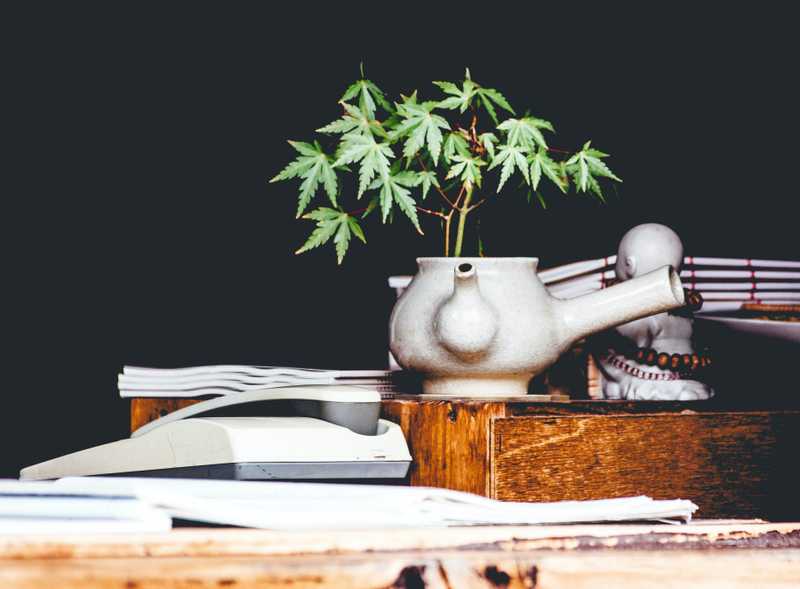Not all Canadians will be allowed to grow cannabis at home, according to some of the new bills being tabled across the 10 provinces and territories.
Federal legislation will allow people to grow up to four marijuana plants for recreational use. However, Ottawa's bill does allow provinces to set stricter rules. Manitoba’s framework exists separately from the federal medical cannabis system, as does that of Quebec. Neither provinces want residents cultivating non-medical marijuana. Of course, medical marijuana users are exempt from this provision.
Another Case of Provinces vs. National Marijuana Laws
This province-by-province entanglement of laws and regulations contrasts with the slightly less restrictive national medical cannabis system. Under the Access to Cannabis for Medical Purposes Regulations (ACMPR), Canadians may register to grow their own medicine at home as long as they haven’t been convicted of a marijuana-related offence.
The maximum number of plants per patient is based on a formula in the ACMPR that takes into account:
- The patient's daily amount of cannabis as authorized by their health care practitioner.
- The average yield of a marijuana plant under typical growing conditions.
- The number of growth cycles expected in a year.
There's even a calculator to help figure this equation out. The ACMPR system will continue to operate in parallel to the provincial recreational market.
Manitoba the First to Say No to Marijuana Home Grows
The Manitoba Progressive Conservative government tabled its Safe and Responsible Retailing of Cannabis Act that sets 19 as the minimum age to buy recreational marijuana. The province intends to demonstrate its dedication to safe and healthy school communities. Like alcohol, it will be unlawful for Manitobans who are underage or intoxicated to buy cannabis.
And then on top of that, citizens won’t be allowed to grow marijuana at home. Anyone found with plants, even under the allowable federal number of four, will be guilty of a provincial offence. They may, under the Liquor, Gaming and Cannabis Act, be subject to a fine.
Marijuana in Manitoba will be sold in privately owned stores, so this could be a way for the government to keep tighter control of the cannabis trade and the tax revenues it creates. But they aren't the only ones benefiting from the rule; homebuyers and real estate investors will find it reassuring as well. Lorne Weiss of the Manitoba Real Estate Association praises the law, saying that private grow operations can damage the structural integrity of a house and pose a health risk due to mould or fire.
Quebec's New Cannabis Code
Polls so far show that residents of Quebec are some of the most uneasy with legalizing cannabis. The plan going forward, outlined in Bill 172, reflects that sentiment. Its critics are calling it the most stringent policy of any province so far.
Quebec will continue to outlaw growing cannabis at home, as ministers feel that enforcing specific plant sizes and limits would be a nightmare. Individuals caught with fewer than four plants will face a provincial offence fine of between $250 and $750, whereas more than four plants will be punishable under the federal Criminal Code.
A government agency, the Société Québécoise du Cannabis (SQC) has exclusive control of recreational use. The SQC will sell products through 15 stores at first and expand that number to 150 outlets in two years, with online sales available from the onset.
These rules are aimed at keeping marijuana out of the hands of children, but critics of Bill 172 and the Liberal government of Quebec doubt the exclusivity will prevent the profits from reaching the hands of criminals.
Two Sides to Policing of Legal Cannabis Home Grows
Manitoba and Quebec are the first two provinces to put their foot down on homegrown recreational cannabis, and they may not be the last. The cautious approach is appealing to provinces that want to assure landlords who are worried about the safety risks incurred by home growing, such as high electricity usage from lights and water damage from hydroponic systems—not to mention the cost of employing more police officers to help enforce the four-plant legal limit.
But as some medical users can grow up to 50 plants at home, the fact that non-medical users in a few provinces can’t grow any appears vastly uneven. Citizens who grow their cannabis at home, responsibly, do so to offset the cost of buying cannabis from a conventional store and enjoy the freedom of cultivating specific genetic strains, such as an avid gardener may grow their favourite species of flowers, fruit or vegetables at home.
Photo credit: Alexandre Chambon
